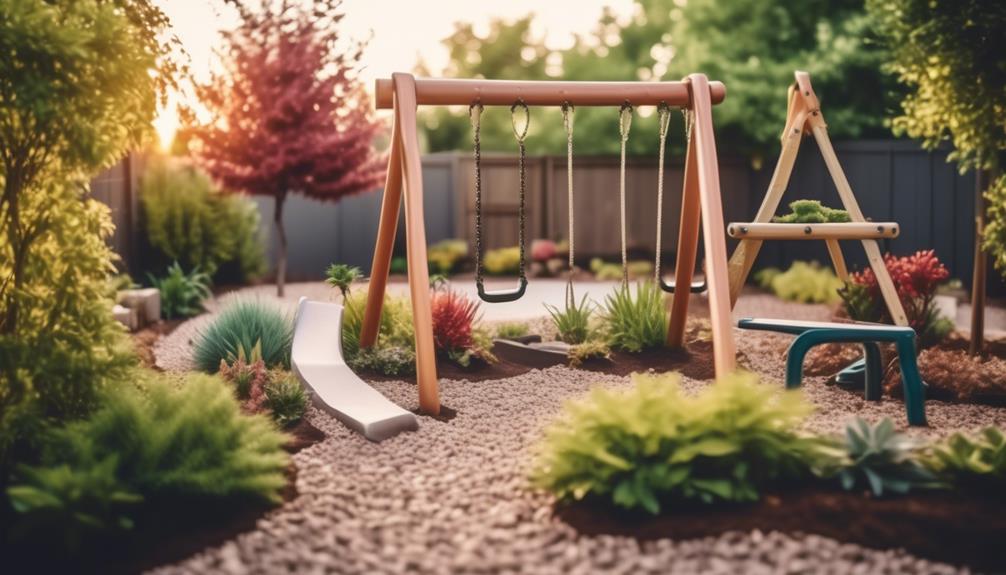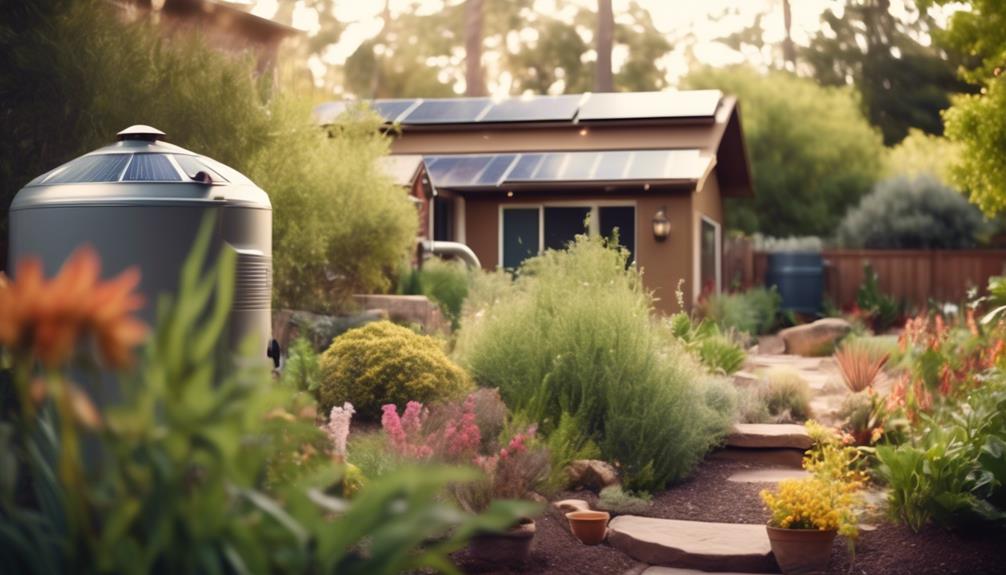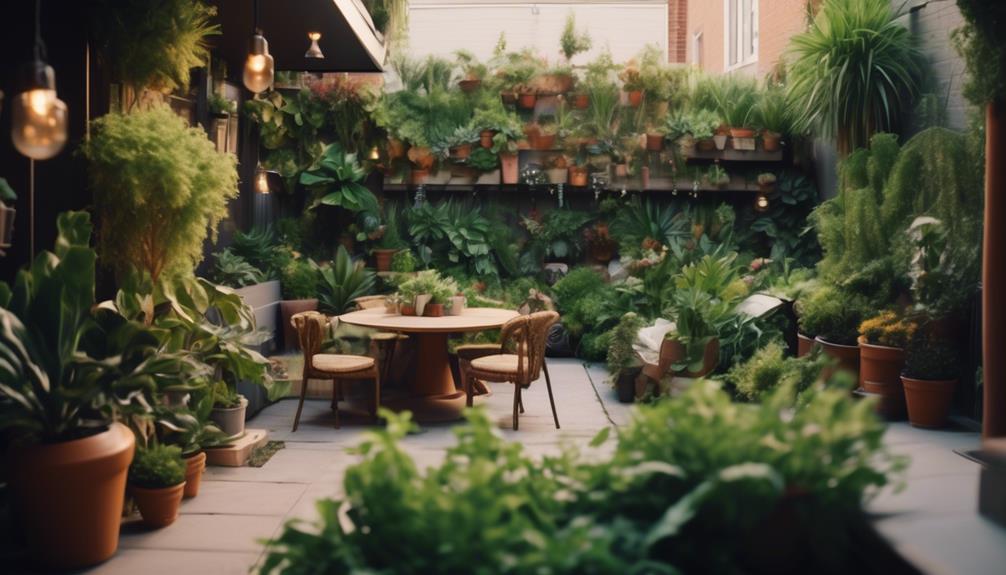As a parent, I understand the importance of creating a child-friendly yard that encourages outdoor play and exploration. Did you know that studies show children who spend time playing outdoors experience a wide range of physical, mental, and emotional benefits?
When it comes to designing a yard that caters to kids, there are several key elements to consider, from the type of play equipment to the layout of the space. Through my own experience and research, I’ve discovered a variety of practical and creative yard designs that can truly enhance a child’s outdoor experience.
So, let’s explore some of the best child-friendly yard designs that can turn your outdoor space into a fun and safe haven for your little ones.
Key Takeaways
- Incorporating outdoor play equipment promotes physical activity and imaginative play.
- Safety considerations, such as regular inspection and maintenance, childproofing, supervision, and impact-absorbing materials, should be prioritized.
- Interactive garden features and natural playground elements connect children with the natural world and foster appreciation for the environment.
- Creative activity zones, including themed play areas and dedicated art spaces, inspire imagination and social interaction.
Outdoor Play Equipment
When designing a child-friendly yard, incorporating outdoor play equipment is essential for promoting physical activity and imaginative play.
A swing set is a timeless addition that provides endless joy for children. It’s important to ensure that the swing set is securely anchored and has a soft landing surface beneath it.
A sandbox offers a world of creativity and fun. I recommend a covered sandbox to keep the sand clean and dry when not in use.
Additionally, a climbing frame can be an excellent way to encourage physical activity and build strength and coordination. When choosing a climbing frame, safety is paramount, so look for sturdy construction and rounded edges.
A trampoline can be a thrilling addition to the yard, but it’s crucial to invest in a high-quality, safety-certified trampoline and establish strict safety rules.
When setting up outdoor play equipment, always consider the layout to ensure there’s enough space for each item and a clear path for children to move around safely.
Safety Considerations
To ensure the safety of children while using outdoor play equipment, it is crucial to meticulously inspect and maintain each item regularly. Childproofing measures such as ensuring that all equipment is age-appropriate and free from sharp edges or pinch points are essential. Additionally, regular supervision is paramount to prevent accidents and ensure that children are using the equipment properly. When it comes to safe surface materials, it’s important to use impact-absorbing materials such as wood chips, sand, or rubber mulch beneath play equipment to cushion falls. Boundary enclosures, such as fences or natural barriers, help keep children within the play area and away from potential hazards like pools or roads.
| Safety Considerations | Description |
|---|---|
| Childproofing Measures | Regularly check for any signs of wear and tear, and ensure that equipment is suitable for each age group. |
| Supervision | Always supervise children while they are using the play equipment to prevent accidents or misuse. |
| Safe Surface Materials | Use impact-absorbing materials such as wood chips, sand, or rubber mulch beneath play equipment. |
| Boundary Enclosures | Install fences or natural barriers to keep children within the play area and away from potential hazards. |
Interactive Garden Features
Inspecting the play area for potential interactive garden features, such as sensory plants or musical chimes, adds an extra layer of engagement for children while maintaining a safe environment.
Creating a sensory garden within the yard can provide a range of tactile, olfactory, and visual experiences for children. Incorporating plants with different textures like lamb’s ear or fuzzy sage, fragrant flowers such as lavender, and visually stimulating plants like ornamental grasses can stimulate the senses and spark curiosity.
Additionally, including a natural playground with features like tree stumps for balancing, a small sandpit for digging, and a low wooden bridge for exploration can encourage physical activity and imaginative play. These elements not only promote interactive play but also connect children with the natural world, fostering a deeper appreciation for the environment.
When designing these features, it’s important to ensure that they’re age-appropriate, well-maintained, and integrated seamlessly into the overall landscape to create a harmonious and inviting space for children to explore and enjoy.
Creative Activity Zones
Looking for opportunities to create diverse and stimulating play areas within the yard can inspire children’s creativity and keep them engaged in active, imaginative play. One way to foster imaginative play is by incorporating themed play zones, such as a pirate ship or a fairy garden. These spaces encourage children to immerse themselves in imaginative scenarios, promoting creativity and social interaction.
Another important aspect of creative activity zones is sensory exploration. Including a sensory garden with different textures, colors, and scents provides children with a rich, tactile experience that stimulates their senses and encourages exploration.
Additionally, setting up a dedicated art area with easels, chalkboards, and a variety of art supplies allows children to express themselves creatively through drawing, painting, and other artistic activities. It’s also beneficial to include a quiet reading nook, where children can retreat to enjoy books and let their imaginations soar.
- Affordable DIY Landscaping Tips for Small Yards
- Contact
- 13 Stunning Modern Minimalist Yard Designs
- What Are Easy Low-Maintenance Yard Design Ideas?
- 13 Tips for Traditional English Garden Landscaping
Low-Maintenance Landscaping

As I’ve seen the benefits of incorporating creative activity zones into the yard, I’ve learned the value of integrating low-maintenance landscaping that not only enhances the aesthetics but also minimizes the need for constant upkeep. When selecting low-maintenance plants, it’s crucial to opt for species that are well-suited to the local climate and soil conditions. Drought-resistant plants, such as lavender, ornamental grasses, and succulents, require minimal watering and upkeep. Additionally, utilizing water-saving irrigation systems, like drip irrigation or soaker hoses, can significantly reduce water consumption while keeping the plants healthy.
In my experience, gravel and mulch are excellent low-maintenance options for ground cover. These materials help to suppress weed growth, retain moisture, and reduce the need for frequent mowing or trimming. When designing the yard, incorporating hardscaping elements, such as pathways, decks, or patios, can further minimize the area that requires regular maintenance.
Frequently Asked Questions
What Are Some Tips for Involving Children in the Design Process of Their Own Play Area?
Involving children in the design process of their play area is crucial for creating a child-friendly design. Collaborating with kids allows for creative input, ensuring the outdoor play space is both safe and enjoyable for them.
How Can I Incorporate Natural Elements Like Rocks, Water, and Plants Into My Child-Friendly Yard Design?
Incorporating natural elements like rocks, water, and plants into my child-friendly yard design is essential. Nature-inspired play and creative landscaping ideas can create a magical outdoor space for kids to explore, learn, and have fun.
Are There Any Innovative Ways to Repurpose or Upcycle Items for Use in a Child-Friendly Yard?
Innovative ways to repurpose materials for a child-friendly yard include using old tires as colorful planters or creating a mud kitchen from discarded wooden pallets. Eco-friendly play areas can be fashioned from reclaimed wood and natural materials, fostering creativity and sustainability.
What Are Some Ideas for Creating a Sensory Garden That Engages All Five Senses for Children?
Creating a sensory garden involves stimulating all five senses. I’ve found that incorporating educational activities like plant identification, tasting herbs, feeling different textures, listening to wind chimes, and smelling fragrant flowers encourages exploration and learning.
Can You Provide Some Suggestions for Integrating Technology Into Outdoor Play Areas for Kids, Such as Interactive Educational Games or Nature-Themed Apps?
I’ve found that outdoor learning can be enhanced by integrating technology. Nature-based apps and interactive play elements, like educational games, can provide a fun and educational experience for kids in the yard.
Conclusion
After years of designing child-friendly yards, I’ve found that a combination of outdoor play equipment, safety considerations, interactive garden features, creative activity zones, and low-maintenance landscaping is key.
By incorporating these elements, you can create a space that not only encourages active play and exploration but also ensures safety and easy maintenance.
So, roll up your sleeves and get ready to create the ultimate child-friendly yard that will provide endless fun for your little ones.

